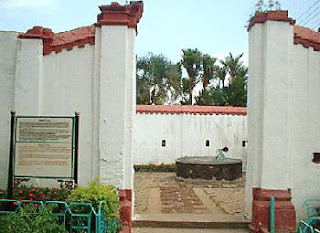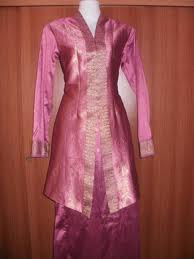Melaka is located on the Western Coast of Peninsular Malaysia facing the Straight of Melaka, about 147 kilometers from Kuala Lumpur and 245 kilometers from Singapore. Melaka is actually found sandwiched between the states of Negeri Sembilan and Johor. It covers and area of 658 square kilometers and is divided into three district namely Alor Gajah, Melaka Tengah and Jasin.
 |
| PULAU BESAR |
Pulau Besar is located about 3 nautical miles off Pengkalan Pernu at Umbai, 10km south of Melaka town. Those in search of fresh air, sandy beaches and tranquillity will be entranced by the unspoilt natural beauty of the island. It also abounds with intriguing legends and sacred graves and shrines. There is an island resort with beach chalets, a yacht club and a host of sea - based sporting facilities. The island is ideal for swimming, fishing, snorkelling, camping and picnicking.
The most famous of these has it that several hundred years ago, a beautiful and kind-hearted princess of the Sultanate of Malacca fell in love with a fisherman from Sumatra. When the fisherman had to return to Sumatra, he promised the princess that he would return to marry her.
A few months later, misfortune was to befall the happy couple when the boat the fisherman was on, capsized on its way to Malacca after being caught in a raging storm. The young fisherman was to go down with the ship.
All this time, the princess had been waiting patiently for the fisherman's return. She was soon to discover that she was pregnant. Hearing no news and in total desperation, she threw herself into the sea. Legend has it that her body miraculously floated to the site of her lover's capsized ship and remained there. This is said to account for the shape of the island of Pulau Besar.
A few months later, misfortune was to befall the happy couple when the boat the fisherman was on, capsized on its way to Malacca after being caught in a raging storm. The young fisherman was to go down with the ship.
All this time, the princess had been waiting patiently for the fisherman's return. She was soon to discover that she was pregnant. Hearing no news and in total desperation, she threw herself into the sea. Legend has it that her body miraculously floated to the site of her lover's capsized ship and remained there. This is said to account for the shape of the island of Pulau Besar.
HOW TO GET THERE???
There are regular bus services to Umbai from the Jalan Tun Ali Terminal in Malacca town. From the Pengkalan Pernu jetty, a boat then transports you to the island. The journey to Pulau Besar from Umbai by speed boat takes 15 minutes. A 45 minutes boat service is available from the Shahbandar jetty in Malacca town as well as the jetty behind the State Tourist Information Centre.
INTERESTING PLACES















